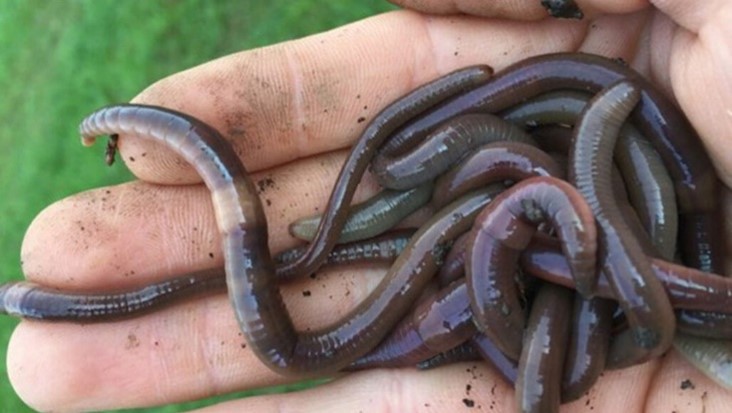By Kim Burns, VT Agency of Agriculture, Food & Markets
In 2019, The University of Vermont received a Vermont Specialty Crop Block Grant Program (SCBGP) grant to research the invasive pest known as jumping worm (Amynthas spp.). The jumping worm is present in twelve out of fourteen Vermont counties and has been in some locations for more than a decade. However, it appears to be spreading more recently. Its effects on Vermont’s agriculture and forests are not fully known. University of Vermont professor Dr. Josef Görres and PhD student Maryam Nouri-Aiin are conducting research to uncover more about the worm and how to control it.

The “jumping worm” is a group a group of invasive earthworm species originating in Asia. Jumping worms live on the soil surface just under the leaf litter in forests, gardens, and agricultural landscapes. They rapidly consume organic matter and excrete castings that resemble coffee grounds. The grainy worm castings can easily erode, exposing tree roots. This creates an understory environment that welcomes establishment of invasive plant species. When speaking on the effect that invasive worms have on Vermont’s ecology, Görres said, “Forests will change if the worms continue to spread.”

Jumping worms can also affect Vermont specialty crop producers including maple operations, plant nurseries, and composting facilities. The worms and their cocoons spread through leaf mulch, wood chips, compost, nursery plants, and soil. Another pathway for spread is if they are sold as fishing bait or used for vermicomposting.
With the help of the Vermont SCBGP grant, Görres studied the worm’s impact and trialed effective vermicides (chemical or biological treatments). Görres also educated growers & landscapers on how to identify an infestation and best management practices (BMPs). It is important to note that jumping worm research is ongoing, and there are currently no pesticides labeled for use against jumping worms. In the meantime, Dr. Görres encourages growers to put in place preventative measures. These include sanitation of tools & equipment, growing plants from seed when possible, transplanting bareroot plants, and inspecting nursery stock. It is also recommended to use only heat-treated soil, compost, wood chips, and mulch.
One of the main ways the public can help is to learn to identify the jumping worm. Jumping worms differ from other earthworms as they have smooth bodies and thrashing, snake-like movement. In the late summer to early fall, the jumping worm’s clitellum (a band encircling the worm’s body) becomes pronounced. The jumping worm’s clitellum is much lighter in color and flush with the body, unlike in European earthworms where the clitellum is raised and does not completely encircle the body.
If you find jumping worms, post a photo of them to iNaturalist (iNaturalist.org). This will help track the jumping worm's spread in Vermont. The current treatment methods are to till and/or solarize the soil materials that the worms live in. Jumping worms can also be hand-picked and drowned in soapy water or alcohol or put into sealed plastic bags in the trash. For more information, visit vtinvasives.org/invasive/jumping-worms or visit the Agency’s website at agriculture.vermont.gov and search for “invasive pests.”

